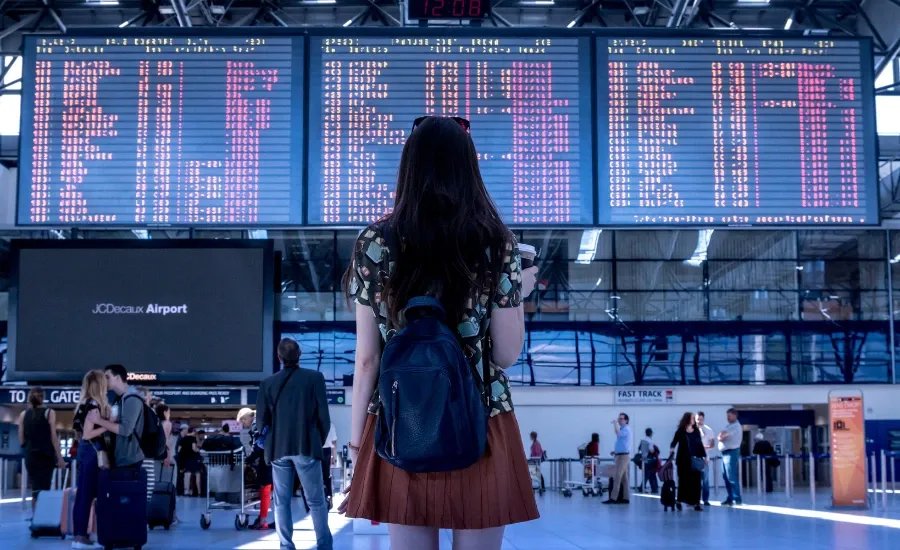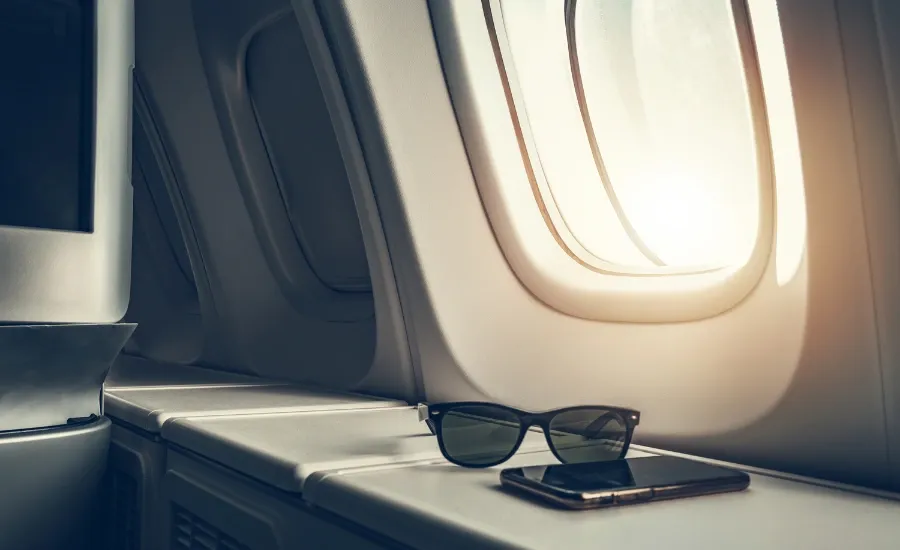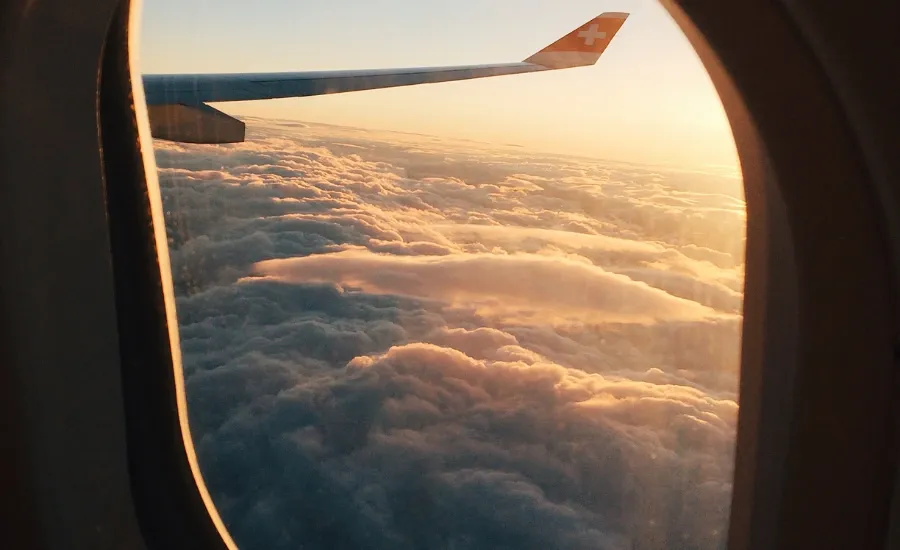
12 Game-Changing Travel Hacks That Will Transform Your Long-Haul Flight Experience
This article contains affiliate links. When you purchase through these links, The Working Gal may earn a small commission at no additional cost to you. This helps support our editorial team and allows us to continue providing honest, thorough product reviews. All opinions expressed are the author's own and based on personal testing and research.
Because nobody should have to suffer through 10+ hours of airplane purgatory
We've all been there, haven't we? You're three hours into what feels like the world's longest flight, you've already watched two mediocre movies, and the person next to you has claimed both armrests as their personal real estate. Your neck is already protesting from that impossible airplane pillow, and you still have seven more hours until you touch down. The excitement of your destination feels overshadowed by the daunting journey ahead.
As someone who's logged more air miles than I care to admit (thanks, work conferences and wanderlust), I've learned that surviving—no, thriving—on long-haul flights is absolutely an art form. After countless red-eye flights, international business trips, and vacation adventures, I've cracked the code on making those marathon flights not just bearable, but actually productive and comfortable.
Pre-Flight Preparation That Sets You Up for Success

Before we dive into the in-flight magic, let's talk about the groundwork that makes everything else possible. The secret to a successful long-haul flight actually starts long before you set foot in the airport.
1. Create Your Personal Flight Itinerary (Yes, Really!)
This might sound Type-A to the extreme, but hear me out. One of the most overlooked travel hacks is actually planning how you'll spend your time in the air. I'm not talking about a minute-by-minute schedule—I'm talking about a loose framework that breaks up those intimidating hours into manageable chunks.
Before your flight, take a look at the total travel time and divide it into realistic segments. I like to plan for meals (even if you're bringing your own), entertainment blocks, work time if needed, and crucial rest periods. For a 10-hour flight, I might plan: first meal and settling in (1 hour), movie or reading time (2-3 hours), work or creative projects (2 hours), rest time (3-4 hours), and final stretch with breakfast and arrival prep (1-2 hours).
Having this rough outline gives you a sense of control and progress, plus it prevents that awful feeling of aimlessly scrolling through the entertainment system for the hundredth time. Pro tip: Write this down in your phone's notes so you can reference it when decision fatigue kicks in.
2. Invest in Sleep Accessories That Actually Work
Let's be honest—those flimsy airline eye masks and foam earplugs aren't doing anyone any favors. If you're serious about getting rest on your flight (and you should be), it's time to upgrade your sleep game.
Investing in a really good blackout mask will make the flight experience exponentially smoother. Look for masks with contoured padding that creates space around your eyes rather than pressing down on them. For earplugs, ditch the basic foam ones and invest in something designed for extended wear. Loop Experience earplugs have revolutionized my travel experience—they offer different options for complete silence, volume reduction, or background noise filtering while still allowing conversation. I often layer these with my noise-canceling headphones for complete sensory isolation when I need to sleep.
3. Master the Art of Strategic Hydration
Flying dehydrates you faster than a day in the desert, and those tiny cups of water from the beverage cart aren't cutting it. Here's where you need to get strategic about your hydration game.
Pack electrolyte powder packets (Liquid IV are my go-tos) and bring a large reusable water bottle—I prefer water bottles with measurement markers so I can track my intake. Fill up your bottle after security and ask the flight attendants to refill it regularly throughout the flight. Don't be shy about this; staying hydrated is crucial for beating jet lag and arriving feeling human.
The electrolyte packets are the most important part because they help your body actually absorb and retain the water you're drinking, plus they make plain water taste more appealing when you're trying to hit your hydration goals at 35,000 feet.
Comfort Hacks That Transform Your Flying Experience

4. Pack Your In-Flight Spa Kit
As someone who's obsessed with maintaining my skincare routine, packing a mini spa kit is absolutely non-negotiable. The dry airplane air is brutal on your skin, but a few strategic products can keep you looking and feeling fresh.
Create a small toiletry bag with travel-sized essentials: a gentle makeup remover or cleansing balm, a hydrating face mist, a rich moisturizer that can double as hand cream, lip balm with SPF, and under-eye patches or a hydrating eye cream to help prevent swollen eyes. I also pack a small facial oil—a few drops can revive tired-looking skin and give you that dewy glow despite being in recycled air for hours.
Don't forget about your body either. Pack a travel-sized body lotion and hand sanitizer. Your after-flight self will thank you when you don't look like you've been wandering in a desert for days.
5. The Secret Weapon: A Massage Ball
This is probably the most unexpected item on this list, but trust me on this one. A small massage ball (about the size of a lacrosse ball) is absolute gold on long flights.
That little ball serves as a massager for your back, and the older you get, the more you'll reach for it. You can place it between your back and the seat to work out knots, roll it under your feet to improve circulation, or use it to stretch your calves and ankles. It takes up minimal space but provides maximum relief for those inevitable aches and pains that come with being cramped in an airplane seat.
6. Dress in Layers (But Make It Fashion)
Airplane temperature control is seemingly designed by people who've never actually been on an airplane. You'll be freezing during takeoff, sweating during meal service, and shivering again during the middle-of-the-night hours.
The key is strategic layering that doesn't compromise your style. I typically wear leggings or comfortable trousers, a fitted long-sleeve shirt, a cardigan or zip-up hoodie, and bring a large scarf that can double as a blanket. Choose fabrics that breathe but also provide warmth—merino wool is excellent for this, as are modal blends. And always, always pack a complete change of clothes in your carry-on. If your checked luggage decides to take a vacation of its own, you'll be covered.
Smart Packing and Organization Strategies

7. Create an Accessible In-Flight Survival Kit
Nothing's worse than realizing your lip balm is buried in the overhead bin when your lips feel like sandpaper. I swear by keeping everything you might need during the flight within arm's reach. I don't want to bother my seatmates constantly getting up to grab things, so I am prepared. Pack a small crossbody bag or belt bag with your absolute essentials: phone charger, lip balm, hand sanitizer, earbuds, eye drops, tissues, and a few snacks.
Some airlines are strict about personal item limits, so you might need to pack this as your personal item and then reorganize once you're seated. The beauty of a belt bag is that it'll also be incredibly useful once you reach your destination—perfect for keeping your passport, phone, and money secure while exploring.
8. Snack Like Your Life Depends on It
Let's be real about airplane food for a hot second. Even when it's decent, it often leaves you feeling bloated and uncomfortable. Plus, meal times are at the airline's convenience, not your stomach's schedule.
Packing your own snacks is a total game-changer. I aim for a balanced mix of protein, healthy fats, and complex carbohydrates to maintain stable energy levels. My go-to travel snacks include: mixed nuts, protein bars, apple slices with individual almond butter packets, crackers and cheese, dark chocolate, and dried fruit.
Just remember to check customs regulations for your destination—fresh fruits and certain foods might need to be consumed or discarded before you land.
Movement and Wellness Strategies
9. Compression Socks Are Non-Negotiable
I know, I know—compression socks aren't exactly a fashion statement. But your legs and circulation will thank you immensely. These specially designed socks help prevent blood clots, reduce swelling, and minimize that awful heavy-leg feeling after long flights.
Put them on right before boarding, and don't take them off until you've been walking around your destination for a while. And if you are worried that you won't be fashionable, I've got you: these compression socks will change your mind -I used them on my last trips and, believe me, my feet couldn't be more grateful.
10. Plan Your Movement Strategy
Sitting for 8+ hours straight isn't great for anyone, but airplane seats make it even worse. As soon as that seatbelt sign goes off, make it a point to get up and move regularly.
Before your trip, screenshot some simple exercises you can do in your seat: ankle circles, calf raises, neck rolls, shoulder shrugs, and seated spinal twists. Set a phone reminder to move every hour or two. Even just walking to the bathroom and back, or doing some stretches in the galley area, can make a huge difference in how you feel.
11. Prepare for Mental Wellness
Flying anxiety is real, and being cooped up for hours can affect even the most seasoned travelers. Create a mental wellness toolkit before you fly.
Download guided meditations specifically for flying or anxiety (Calm and Headspace both have great options), create a playlist of your most calming music, and have some engaging podcasts ready. I also recommend downloading a few episodes of light, funny shows that can serve as a distraction during turbulence or anxious moments.
Having these resources readily available means you won't waste precious phone battery scrolling through options when you're already feeling stressed.
12. Create the Perfect Entertainment Arsenal
This goes beyond just downloading a movie or two. Think about creating a comprehensive entertainment strategy that matches different moods and energy levels throughout your flight.
For high-energy times: engaging podcasts, exciting TV shows, or that page-turner novel you've been meaning to read. For wind-down periods: calming documentaries, meditation apps, or gentle music playlists. For productive moments: language learning apps, online courses, or catching up on work projects.
The Working Gal's Final Flight Check
Long-haul flights don't have to be endurance tests. With the right preparation, mindset, and tools, you can actually arrive at your destination feeling refreshed and ready to take on whatever adventure awaits—whether that's closing a big deal in another city or finally sipping that sunset cocktail you've been dreaming about.
The key is treating your flight as part of the journey, not just something to survive. Pack thoughtfully, plan strategically, and don't be afraid to invest in items that will genuinely improve your comfort. A $30 sleep mask might seem like a splurge, but when it's the difference between arriving exhausted versus refreshed, it's worth every penny.
Your next long-haul flight is an opportunity to disconnect from your usual routine, catch up on that reading list, finally listen to those podcasts everyone's been recommending, or simply rest without the usual demands of daily life. Embrace it, and you might just find yourself looking forward to the journey as much as the destination.
Safe travels, and remember—you've got this! ✈️






